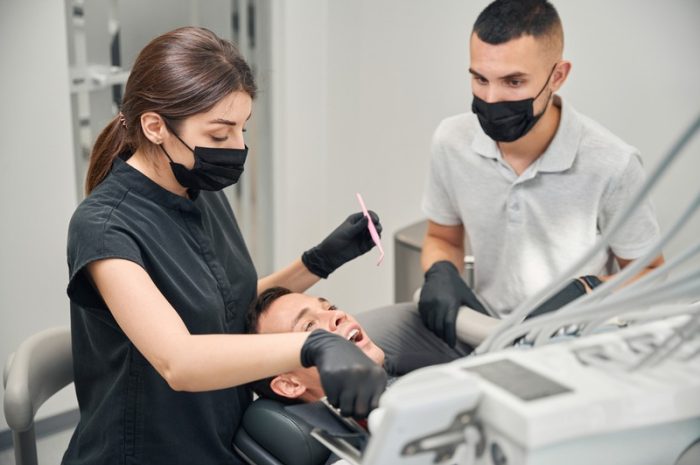Staying Ahead: Understanding Changes in Water Policy and Their Impacts
Water policy is an essential, yet often overlooked, part of our lives. As the climate changes, population increases, and technology advances, so too must our approach to managing one of Earth’s most vital resources. In this article, we’ll explore how staying informed about water policy changes is crucial and how these adjustments impact us on personal, local, and global levels.
Why We Need to Stay Informed
Staying current with water policies is more important than ever. Here’s why:
-
Sustainable Resources Management: Proper water management can help ensure long-term availability and quality.
-
Environmental Preservation: Effective policies protect ecosystems and biodiversity.
-
Community Health: Access to clean water directly impacts public health.
-
Economic Benefits: Water is key to industries such as agriculture and manufacturing, influencing economic stability.
By understanding water policies, we can make informed decisions and advocate for better management practices.
A Brief Look at Recent Water Policy Changes
In recent years, water policy globally has been under constant revision. These changes often aim to address challenges such as water scarcity, climate change, and pollution. Policies may focus on:
-
Water conservation techniques
-
Rights for water usage
-
Pollution control
-
Development of infrastructure for water distribution
Adjusting to these shifts requires a reliable understanding of the intentions behind each policy and their potential impacts.
The Impact of Water Policy on Local Communities
Local communities stand at the forefront of experiencing the direct impacts of water policy changes. When policies shift, it affects everything from the water we drink to our local economies and environments. Here are a few ways these impacts manifest:
1. Access to Clean Water
Changes in water policy can influence who has access to clean, safe water — and who doesn’t. Improved policies can lead to infrastructure developments, ensuring communities receive an adequate supply of water. Conversely, less favorable changes could exacerbate disparities in access.
2. Economic Implications
Water policy changes significantly affect water-intensive industries like agriculture and manufacturing. For example, regulations that impose limits on water usage or increase water pricing can have profound economic implications for producers and consumers alike. Based on past experiences in such sectors, it’s evident that the support of a Grand Junction attorney might be valuable when navigating the complexities of regulatory compliance.
3. Environmental Effects
Environmental preservation is a critical factor in formulating water policies. Good policy changes aim to protect aquatic ecosystems and reduce biodiversity loss. Policies that foster sustainable water use can support healthy habitats for a variety of species.
Global Perspectives on Water Policy
Water policy doesn’t only affect local communities — it has global ramifications. As water is a shared resource, international collaboration is often required to manage cross-border water bodies effectively. Various countries might have differing priorities, but cooperation is key to achieving sustainable water management on a global scale.
Influencing Factors in Water Policy Changes
Several factors influence water policy changes:
-
Climate Change: The changing climate leads to increased droughts and floods, necessitating policy adjustments.
-
Technological Advances: New technologies enable better water conservation and management strategies.
-
Public Awareness: As individuals become more informed about water issues, there is an increased demand for responsive policies.
-
Economic Pressures: Economic challenges may force policy shifts to balance resource needs with financial constraints.
The Role of Technology in Water Policy
Technology is a game-changer when it comes to water policy. Innovations such as smart water meters, remote sensing for agriculture, and advanced water purification systems are being incorporated into modern policies. These technologies enable better monitoring, efficient usage, and effective management. For example, advancements in irrigation technology can drastically reduce water usage in agriculture, ensuring that policies are implemented with greater effectiveness.
Navigating Legal Aspects
The legal context surrounding water policy can be intricate. With regulations constantly evolving, individuals and businesses need to remain vigilant about changes that may affect them. To help understand and navigate this complex legal landscape, consulting with a water attorney in Glenwood Springs could provide valuable insights into rights, responsibilities, and compliance requirements.
Active Participation in Water Policy Development
While understanding the impact of water policy is crucial, actively participating in its development is equally important. Here’s how you can get involved:
-
Engage in Public Discussions: Participate in town halls and public discussions related to water policy.
-
Advocate for Sustainable Practices: Support policies that promote environmentally friendly and sustainable water management.
-
Stay Informed: Keep up with the latest news and reports on water policy changes.
-
Educate Others: Share information and insights to help others understand the significance of water policies.
Collaborative Efforts for Effective Water Management
Effective water management often requires collaboration between governments, organizations, and individuals. By working together, stakeholders can develop integrated approaches that address various aspects of water management, from conservation to distribution. For example, collaboration can lead to comprehensive initiatives that combine infrastructure development with education and awareness campaigns, all while considering local socioeconomic contexts. In instances where disputes or confusions arise, involving a lawyer in Glenwood Springs can facilitate negotiations and mediate satisfactory resolutions between parties.
Final Thoughts
As we look to the future, understanding and adapting to water policy changes remains paramount. With challenges such as climate change and population growth on the horizon, our ability to implement effective water policy will be a key determinant in ensuring sustainable water resources for everyone. By taking proactive measures, staying informed, and actively engaging in water policy discussions, individuals and communities can influence policy development and foster a future where water resources are managed more effectively and equitably for all.



